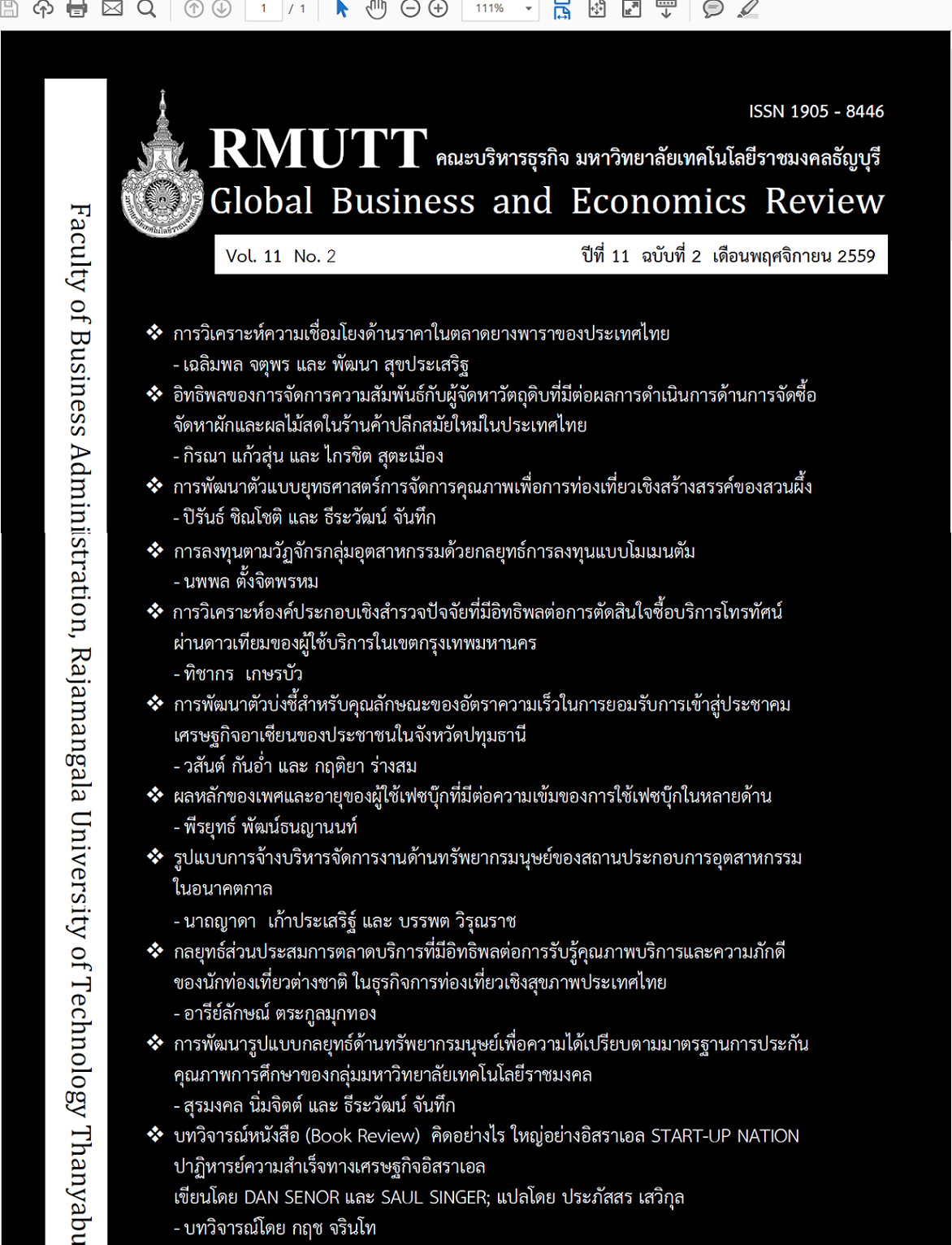INDUSTRY ROTATION USING MOMENTUM STRATEGY: EVIDENCE FROM THE STOCK EXCHANGE OF THAILAND
Keywords:
Industry Rotation Momentum Strategy, Investment Strategy, Stock Exchange of Thailand, Marketing TimingAbstract
This paper examines the performance of industry rotation using momentum strategy evidenced from the Stock Exchange of Thailand. The data is based on the industry total return index during 141-month period starting from January 2004 to September 2015. The most successful strategy is the strategy with six-month formation period with one-month holding period that can generate the return significantly higher than a benchmark portfolio. This implies that determining the winner very frequently can improve the performance of the industry momentum strategy. Therefore, this paper has the contribution for both institutional investors and individual investors to exploit the knowledge in developing the investment strategy in order to earn above-average return. Moreover, the individual investors, by this technique then, can implement the strategy easily with relatively low transaction cost.
References
Braun, M., & Larrain, B. (2005). Finance and the business cycle: international, inter-industry evidence. Journal of Finance, 60(3), 1097-1128.
Cakici, N., Fabozzi, F. J., & Tan, S. (2013). Size, value, and momentum in emerging market stock returns. Emerging Markets Review, 16(3), 46-65.
Carhart, M. M. (1997). On persistence in mutual fund performance. Journal of Finance, 52(1), 57-82.
Chan, L. K. C., Jegadeesh, N., & Lakonishok, J. (1996). Momentum Strategies. Journal of Finance, 51(5), 1681-1713.
Chordia, T., & Shivakumar, L. (2002). Momentum, business cycle, and time-varying expected returns. Journal of Finance, 57(2), 985-1019.
Fama, E. F., & French, K. R. (2012). Size, value, and momentum in international stock returns. Journal of Financial Economics, 105(3), 457-472.
George, H. J., & Hwang, C.-Y. (2004). The 52-week high and momentum investing. Journal of Finance, 59(5), 2145-2176.
Henriksson, R. D., & Merton, R. (1981). On market timing and investment performance. II. Statistical procedures for evaluating forecasting skills. Journal of Business, 54(4), 513-533.
Hussaini, M., Shafaee, M. A., & Garang, A. (2016). An investigation of existence of momentum in the Stock Exchange of Thailand. Modern Economy, 7(3), 327-335.
Jegadeesh, N., & Titman, S. (1993). Returns to buying winners and selling losers: implications for stock market efficiency. Journal of Finance, 48(1), 65-91.
Jones, C. P., & Litzenberger, R. H. (1970). Quarterly earnings reports and intermediate stock price trends. Journal of Finance, 25(1), 143-148.
Liu, M., Liu, Q., & Ma, T. (2011). The 52-week high momentum strategy in international stock markets. Journal of International Money and Finance, 30(1), 180-204.
Moskowitz, T. J., & Grinblatt, M. (1999). Do industries explain momentum? Journal of Finance, 54(4), 1249-1290.
Rouwenhorst, K. G. (1998). International momentum strategies. Journal of Finance, 53(1), 267-84.
Downloads
Published
How to Cite
Issue
Section
License
บทความที่ได้รับการตีพิมพ์เป็นลิขสิทธิ์ของผู้นิพนธ์
ข้อความที่ปรากฏในบทความแต่ละเรื่องในวารสารวิชาการเล่มนี้เป็นความคิดเห็นส่วนตัวของผู้เขียนแต่ละท่านไม่เกี่ยวข้องกับมหาวิทยาลัยเทคโนโลยีราชมงคลธัญบุรี และคณาจารย์ท่านอื่นๆในมหาวิทยาลัยฯ แต่อย่างใด ความรับผิดชอบองค์ประกอบทั้งหมดของบทความแต่ละเรื่องเป็นของผู้เขียนแต่ละท่าน หากมีความผิดพลาดใดๆ ผู้เขียนแต่ละท่านจะรับผิดชอบบทความของตนเองแต่ผู้เดียว







